Rococo Architecture — The Ornate and the Extravagant
Rococo is an 18th-century architectural style characterized by its whimsical elegance.
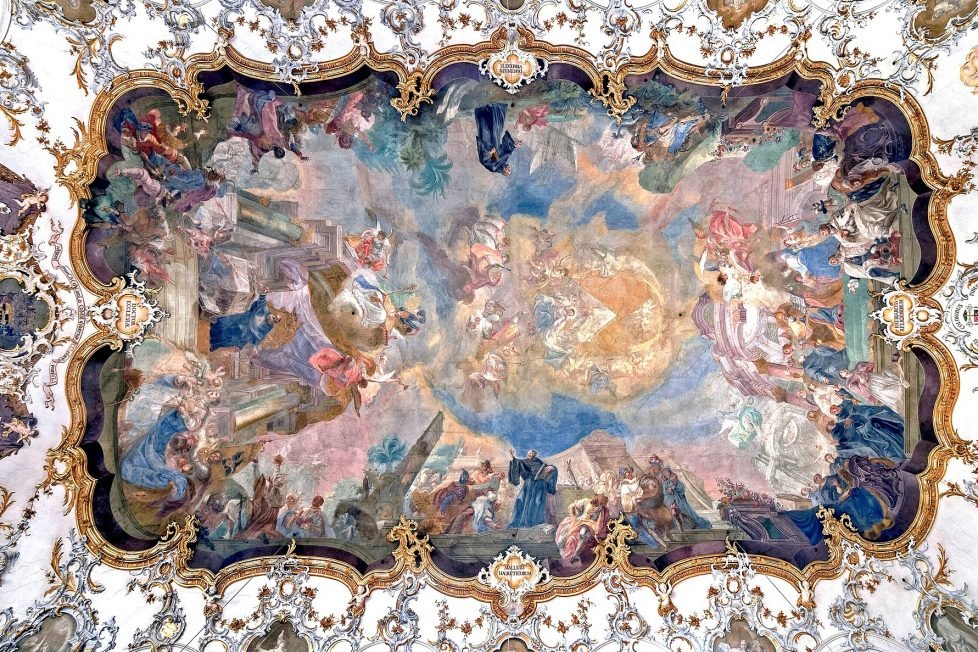
Rococo is an 18th-century architectural style characterized by its whimsical elegance.

Table of Contents
ToggleIn its early days, Rococo was primarily a decorative style. More specifically, the style that was established in France for the decorating of private dwellings. It attained maturity between 1725 and 1740. Rococo signified a radical departure from its forefather, the Baroque. It is distinguished by its delicacy and elegance. Its ornamental shapes are made up of tiny, broken curves that are produced in wood or plaster and float on the surface of the wall or ceiling, leaving most of it intact.
Rococo architects minimized architectural components (columns, pilasters, entablatures) and combined their ornamentation into gauze-like patterns on walls and ceilings, which frequently blended into one another.
Rococo is an aesthetic style that arose in France as a lighter and more intimate derivation of the Baroque and was originally applied in interior design. It began in France in the 18th century and expanded throughout Europe. The term “rococo” was created as a play on the French word “rocaille,” which described the use of tiny shells and stones in grottoes and other architectural details that had been popular since the Renaissance.
A lot of academics and historical writers only use the term “Rococo” to describe decorative elements, although it is more appropriate to use it to describe complete structures, since the Rococo ornamentation is inseparable from the architecture. This is especially evident in the works of German artists François de Cuvilliés (1731-1777) and Dominikus Zimmermann (1685-1766), wherein the Rococo achieved considerable popularity and gave rise to creations of the highest caliber and inventiveness. Additionally, furnishings and ceramics, such as Nymphenburg porcelain, represented the Rococo style in all its splendor. However, to fully understand Rococo architecture, one must look at the political and social context in which it arose, as those contexts firmly dictated the meaning and direction that this particular style adopted.
The Enlightenment or the Age of Reason both refer to the 18th century. Of course, this does not indicate that man began to think for the first time. Rather, it suggests that he discovered a new method to use his capacity for reason. The 17th century was marked by a widespread attitude, one that held that the universe could be comprehended as a system drawn from a few unchangeable a priori principles or dogmas, notwithstanding its turmoil and diversity.
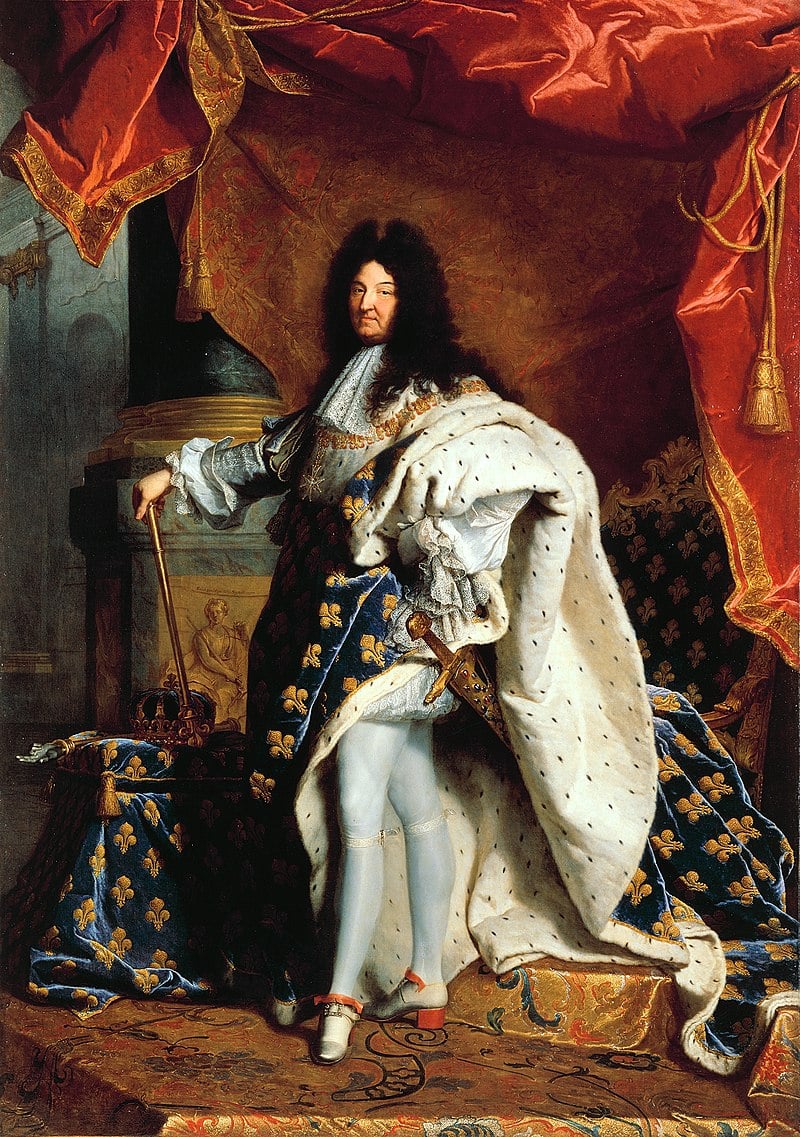
There were several examples of this kind available throughout the Baroque Era, including the philosophies of Baruch Spinoza (1632-1677) and René Descartes (1596-1650), the concept of the absolute power of the monarchy by virtue of divine appointment, and the theological frameworks of Calvinism, Lutheranism, and the Counter-Reformatory Roman Church. As a result of the introduction of the potential of choice, skeptics quickly came to the notion that structures had subjective value instead of definitive worth.
The vanished confidence needed to be substituted with something, and the release of reasoning from the constraints of preconceived notions provided the answer. Therefore, rationality should be used to infer “the facts” from experiences instead of already established principles. Man had an epiphany that the findings should be given at the conclusion of the research rather than at the start of it. Thus, rationality became the instrument of new empirical thinking, which John Locke (1632-1734) had first envisioned towards the close of the 17th century.
Science was guided towards a new approach to observing and analyzing data, away from the capricious and fanciful preconceptions of the past. Isaac Newton was a major proponent of the new strategy, replacing metaphysics with a methodical description and connection of occurrences. A new conception of freedom was directly tied to this new intellectual perspective.
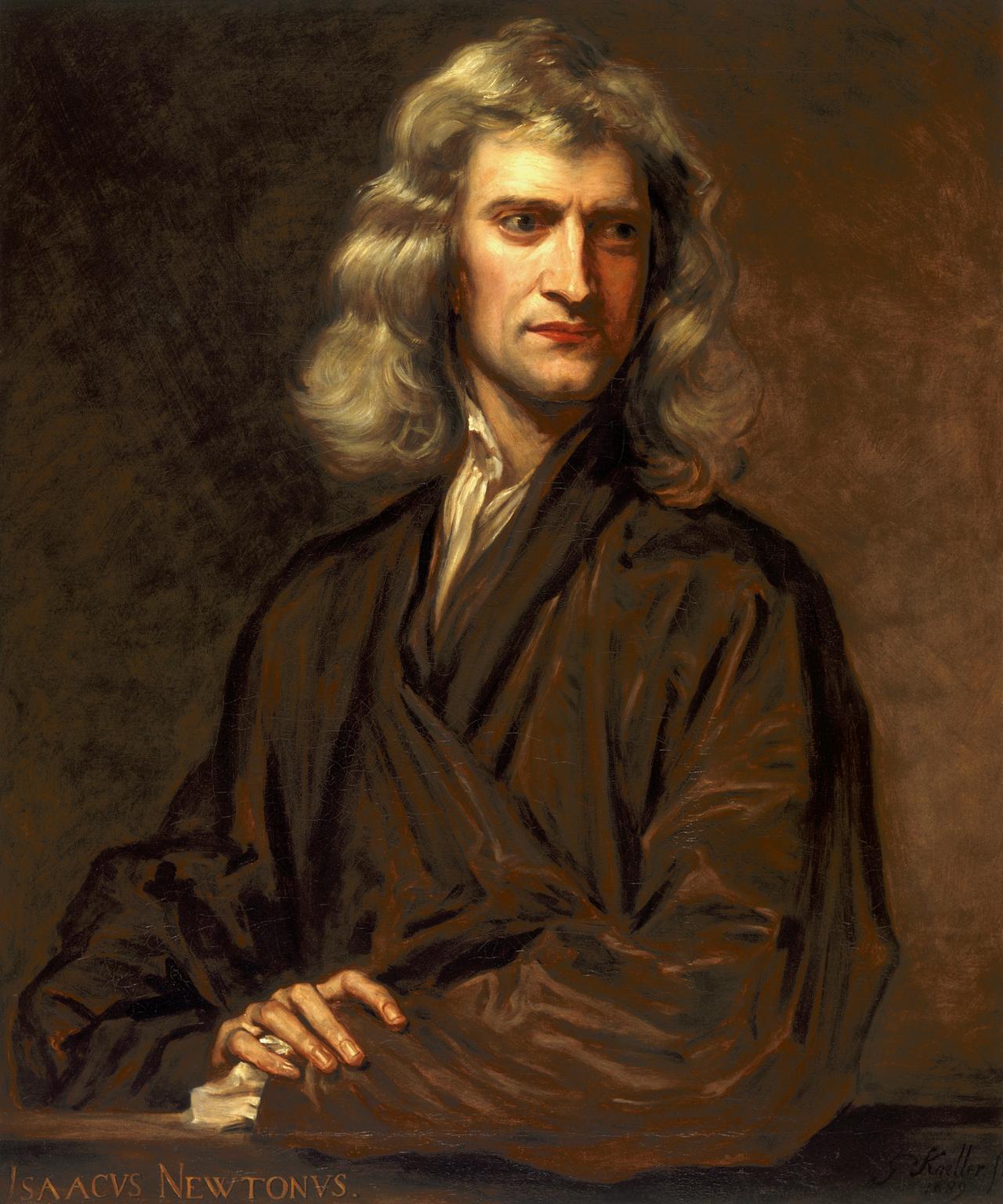
Thus, the Enlightenment worldview rejected the influence of tradition, custom, and government. The enlightened mind, however, desired to uncover the natural basis of knowledge instead of viewing this contradiction as a destructive force. Royal authority was already weakened throughout the French Regency (1715-1723), and the royal household lost its position as the system’s fundamental hub. The absolute king and his palace were supplanted by new sponsors and cultural hotspots.
Overall, the metropolis regained part of its artistic vitality as the working class replaced the destitute and decaying nobles. The Roman Catholic Church was secularized, and the prominent Counter-Reformation supporters, the Jesuits, were banished from the majority of nations. This sequence of events was described by Jean-Jacques Rousseau (1712-1778) using the idea of a society wherein an individual is safeguarded by the combined strength of political structures and where the person will only exist within the parameters of the volonté générale (general will).
As a result, the 17th century’s centralized and hierarchical organization made room for several interdependent, equal components. It had a significant psychological impact. The term “persuasion” may describe the Baroque mentality, but “sensation” was the key concept in the enlightened mind. As a result, the real, authentic picture took the place of the elusive, metaphorical imagery. Natural science and art both show various facets of a single order of existence, which is represented in various manners by truth and beauty, rationality and nature.
The empirical approach to art produced genres that are based on the classification of natural elements. The scientist and the artist simply determine the order as it already exists. This pursuit of the real phenomenon gave way to an investigation of history and the natural world. One must comprehend the idealized vision of the 18th century in this context: a time when man lived in harmony with the environment and was simply guided by his inherent impulses. New philosophical and scientific ideas did not emerge overnight, though, and the previous political structures persisted for the majority of the century.
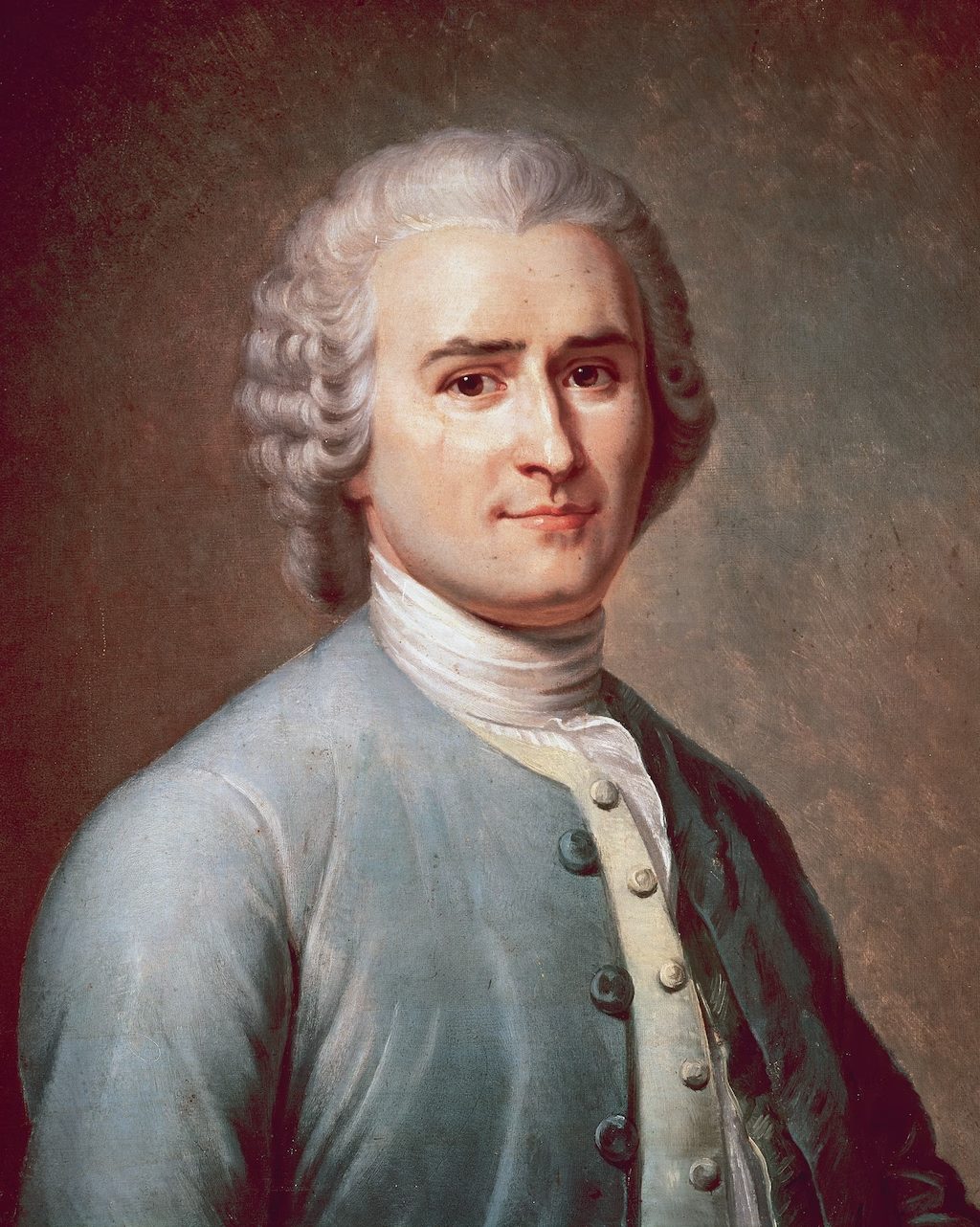
Therefore, Late Baroque and Rococo buildings dominated the landscape until approximately 1760. Rococo was a fascinating phenomenon of change. It did away with Baroque rhetoric and exhibits many traits of the Enlightenment, yet its shapes also convey a certain nostalgia and longing for the Grand Siècle.
Throughout the first half of the 18th century, Rococo thrived in Central Europe, expressing the desire of numerous smaller kingdoms to emulate Louis XIV’s Versailles.
Rococo demonstrates an empirical concern in feeling, but it translates this curiosity into a desire for sensual sensations, including those that are olfactory, gustatory, auditory, visual, and even sexual. Rococo homes display a utilitarian distinction that had never been seen previously and are founded on real practical research of pleasant living. Intimacy is another feature of rococo rooms, which stands in stark contrast to the endless expanse of baroque architecture and expresses the yearning for returning to simpler, natural conditions. However, it represents nature’s fleeting and ephemeral qualities rather than the great scheme of things, making Rococo the conclusion of progress rather than a fresh start.
Long regarded as the most disobedient of design eras, the Rococo was extraordinarily decorative and dramatic, a style lacking boundary, and was sometimes referred to as the culminating manifestation of the Baroque period. Rococo was considered to be shallow, deteriorated, and irrational in comparison to the order, elegance, and solemnity of the Classical style.
From a purely aesthetic point of view and in context with the objective study of architecture, however, one can start by characterizing the Rococo as an intricately ornamental style, with its disproportion being rich in gilding and emphasized in golden and pastel colors. A crucial component of Rococo style was the dazzling use of pastel hues. A few powdered tones, such as creamy tones, pale yellow, pearly grays, lavender, and soft blues, would make up this palette.
Rococo is known for its flowery aesthetic, which features sinuous arcs, spiraling shapes, curves, and waves as an alternative to French classicism’s rigid lines. It incorporated asymmetric embellishments on every aspect, including furnishings inlays made of marquetry, or marque, and molding. Shells or acanthus leaves may be intertwined with asymmetric patterns.
Every Rococo room tried to evoke wonder in the viewer. Rococo interiors in cathedrals, salons, and other opulent buildings astounded and enthralled. For instance, a large staircase may become the focal point of a space, and a cherub-adorned ceiling artwork could spark discussion among visitors.
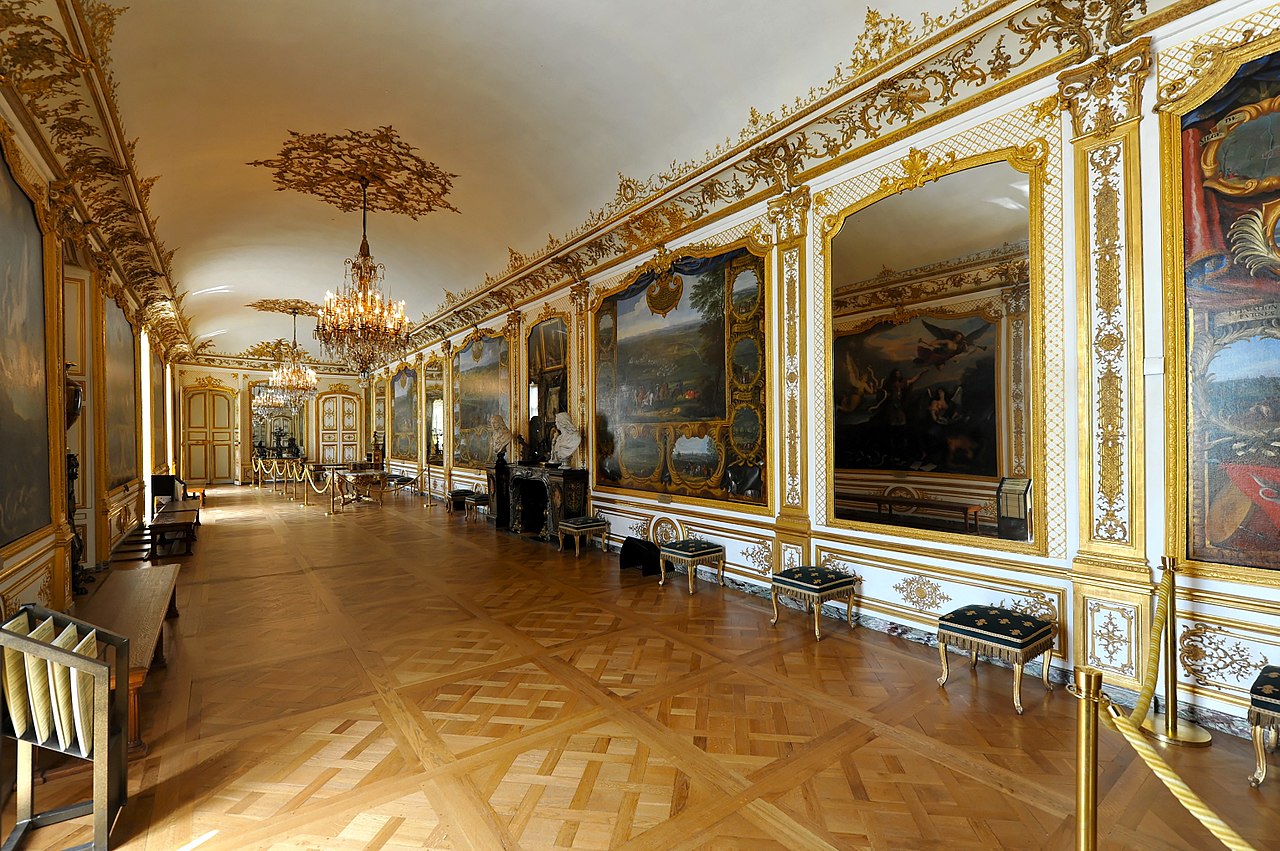
Trompe l’oeil, which is French for “deceive the eye,” was a common artistic technique used in Rococo works. Fine art was given perspectives via trompe l’oeil, which suggested profundity in two-dimensional canvases or produced the appearance of movement in still works of art. Rococo paintings and artwork commonly featured flora and animals, as well as wildlife themes. In Rococo designs, birds, plants, and fruits are frequently used. The most often used material was stucco.
The French Rococo style quickly gave way to the Italian Rococo style. The Baroque movement gave rise to the style, which included exposed, curving forms, terra-cotta buildings with obvious structural elements, and fragile, complex patterns. Form and lighting were other themes of the time.
Italian artists began to study Francesco Borromini‘s (1599-1667) Baroque architecture. Other architects that emerged during this time, such as Filippo Juvarra (1678-1736), adopted his aesthetic but decided to make their artwork bigger and less limited than during the High Baroque era. Spanish Steps were also incorporated into Italian Rococo style, with Santa Maria Della Quercia (1727) being the primary example.
The Madonna del Carmine in Turin (1732), one of Juvarra’s final structures, is Italy’s greatest example of an early Rococo structure. It is a long church with three galleries and chapels on either side. The interior piers are slim and beautiful, not in the least bit imposing, and the framework of the building is attenuated. As a result, the area in the nave and lateral aisles is unified from the exterior wall to the exterior wall and from flooring to vault.
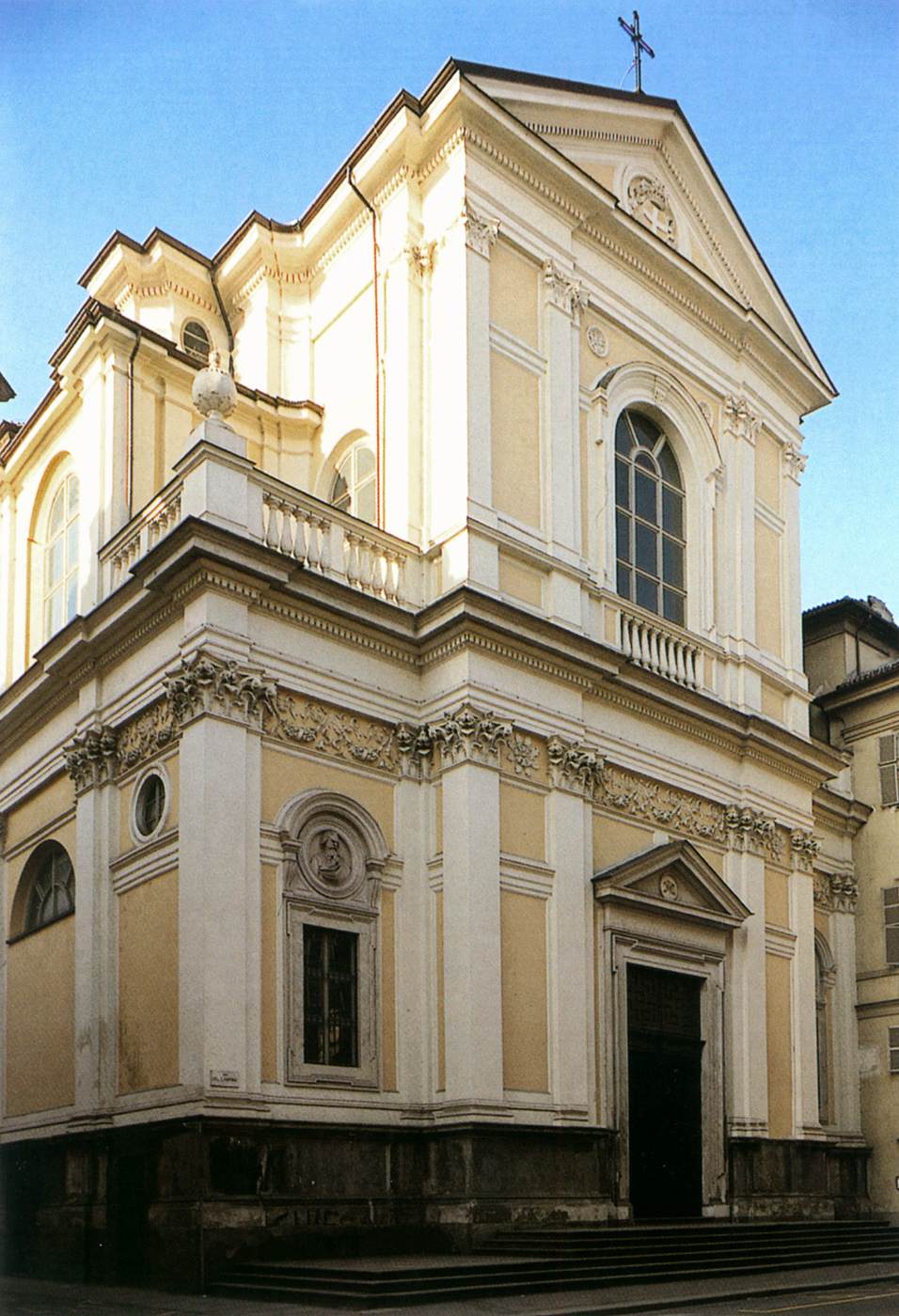
Juvarra constructed Stupinigi near Turin for Vittorio Amedeo II between 1729 and 1733, making it the most skilfully constructed hunting mansion of the 18th century in Italy. There is no other arrangement of lengthy, diversified outdoor spaces like it in Italy, and it is very similar to French ideas that were popular at the time. The thin piers and flowing balcony railings in the grand salon’s domed area, which is shaped into an oval by the outside walls, add a lovely finishing touch.
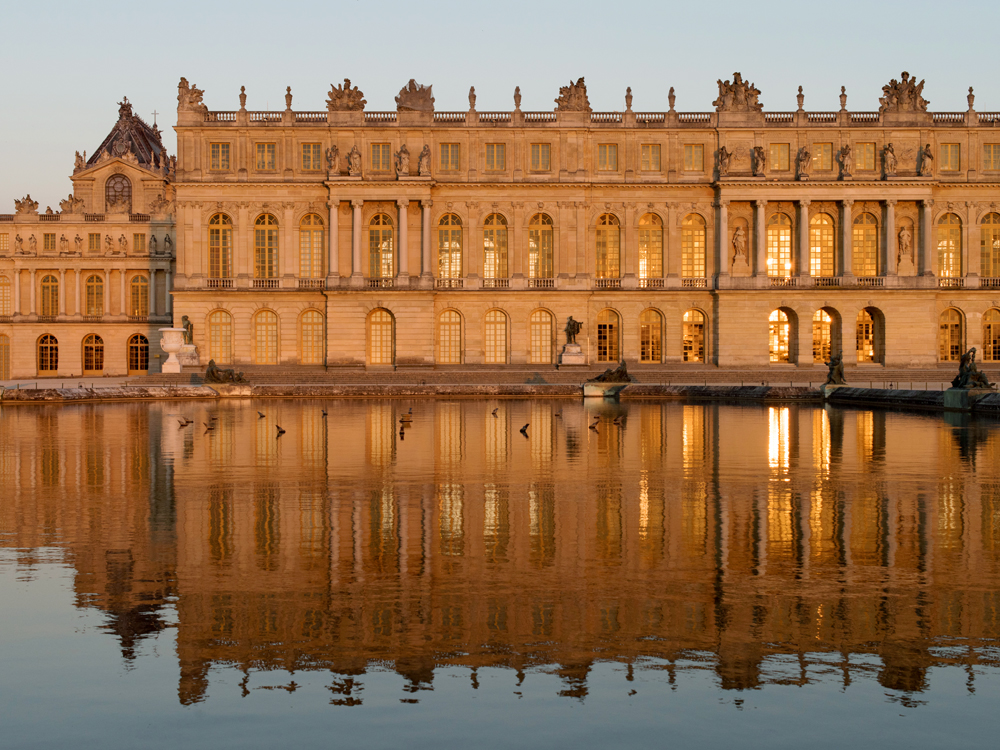
The best-known royal chateau in France is, beyond a doubt, the Palace of Versailles, which was constructed between 1624 and 1698 and represents the pinnacle of French Baroque and Rococo architecture. Versailles is composed of a number of straightforward repetitions continually separated by a succession of huge windows, and it conveys the core principles of Rococo art, with the monarch’s bed serving as the exterior and interior centerpiece.
King Louis XIII (who ruled from 1610-43) commissioned the construction of a hunting complex on a property close to the town of Versailles in 1624. He was following the example of one of his predecessors, Francis I (ruled between 1515–47), who transformed a medieval hunting complex into an amazing chateau and founded the Fontainebleau School in the course of it. The hunting complex acquired the shape of a compact building constructed of red brick and stone that Philibert Le Roy (d. 1646) developed. The initial additions were constructed in 1632, but it hadn’t been until the time of Louis XIV that the building was converted into one of the biggest palaces in the history of mankind.
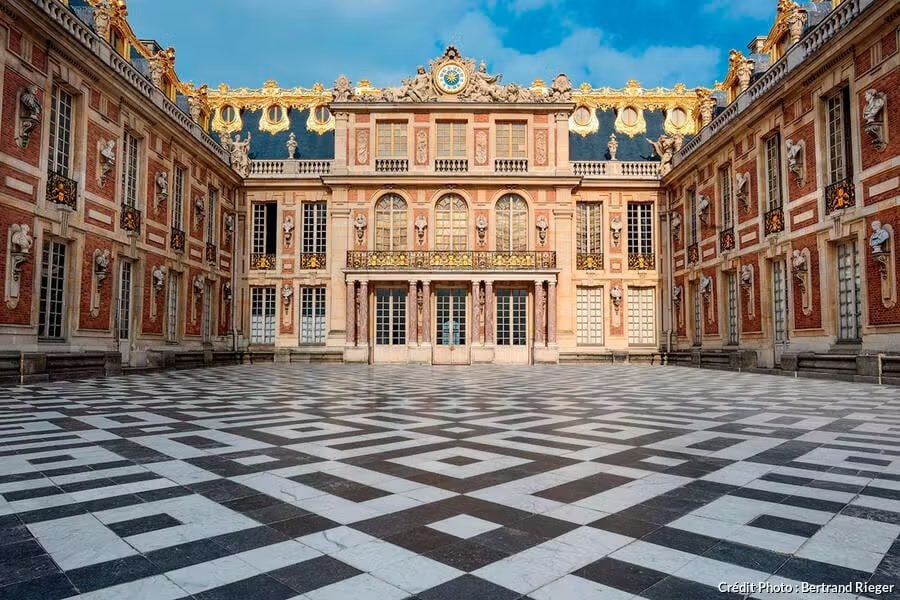
In the beginning (circa 1661), Baroque architects transformed the initial building into a chateau finished with a remarkable monochrome marble courtyard, with wrought iron balconies and columns. The project was the masterpiece under the direction of Louis Le Vau (1612–1670), André Le Nôtre (1613–1700), and Charles Le Brun (1619–1690). This space eventually became known as Cour de Marbre, or Marble Court, after receiving a roof that was flat and two additional extensions with residences for the queen and king.
Following that, there were four major construction projects that took place between 1664 and 1710. Under the direction of architect Jules Hardouin-Mansart (1646–1708), the château was encased in a brand-new, more expansive royal building. In order to exert greater authority over his nobility and separate the ruling elite from the Paris rabble, Louis XIV decided to relocate the whole court to Versailles, and this enlargement was intended to carry out that decision. His goal was to establish a fully powerful, supreme monarchy, and he accomplished this by consolidating every government agency in the royal residence and requiring his nobility to devote a particular amount of their time there.
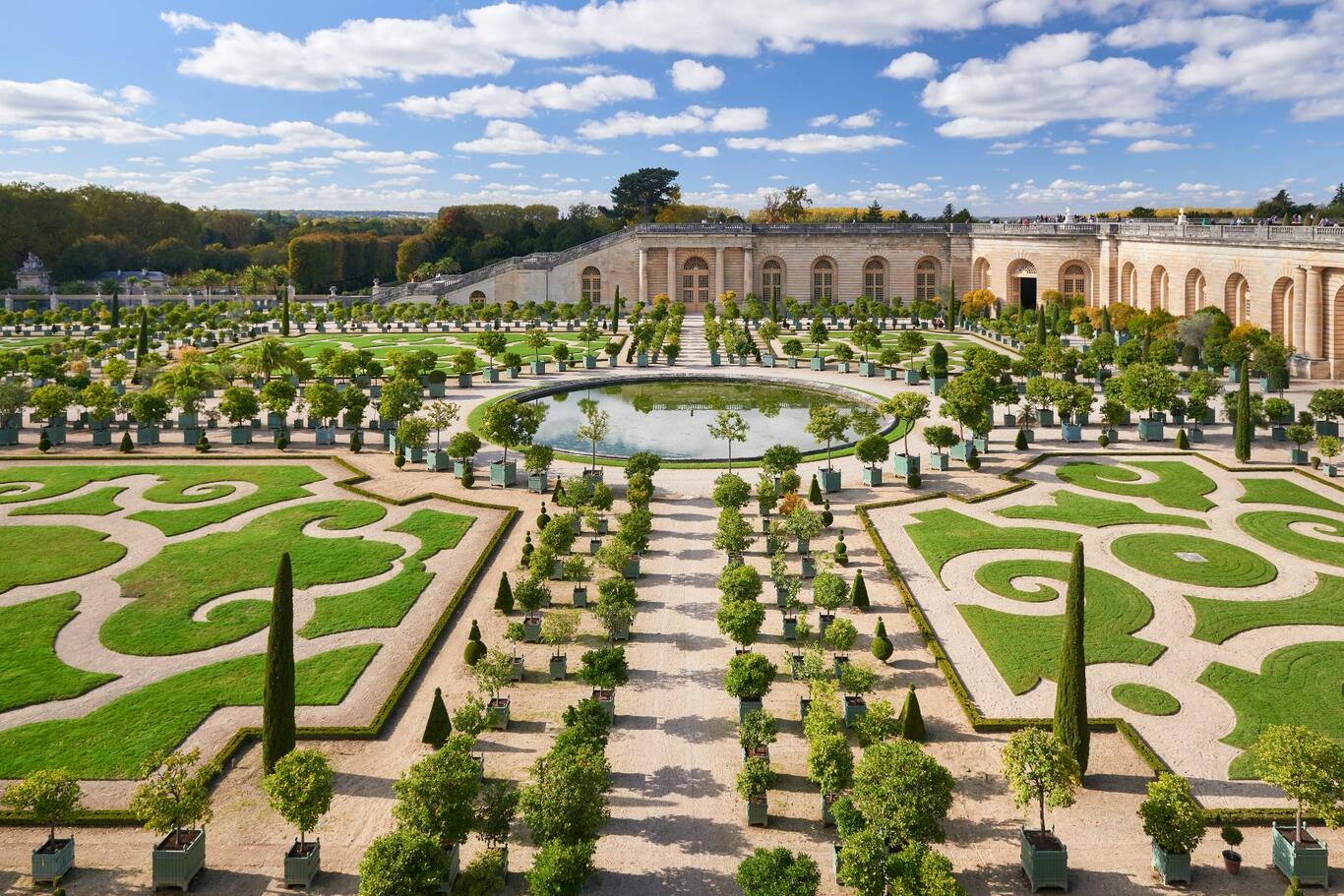
There were 3,000 people living at the court, comprising the monarchs, other elements of the royal family, elected officials, nobles, ambassadors, civil workers, and others, therefore a large structure was needed. The new structure was the pinnacle of palace design. The main building was encircled by extensive, pristine grounds, which had stunning views, water features, and sculptures. It also featured a number of symmetric rooms for the king and queen, in addition to a variety of other architectural elements.
These featured the seventeen mirror-covered arches of The Hall of Mirrors, the Palace’s main gallery, which reflected the seventeen windows. The decorations commemorate the king’s apotheosis, as well as being the very portrait of Rococo architecture and decoration. The Royal Opera of Versailles, created by Ange-Jacques Gabriel (1698–1782), is another renowned space. The Salons of Hercules, Diana, and Mars were among other significant greeting areas. Most of the artwork in the rooms was done by Le Brun.
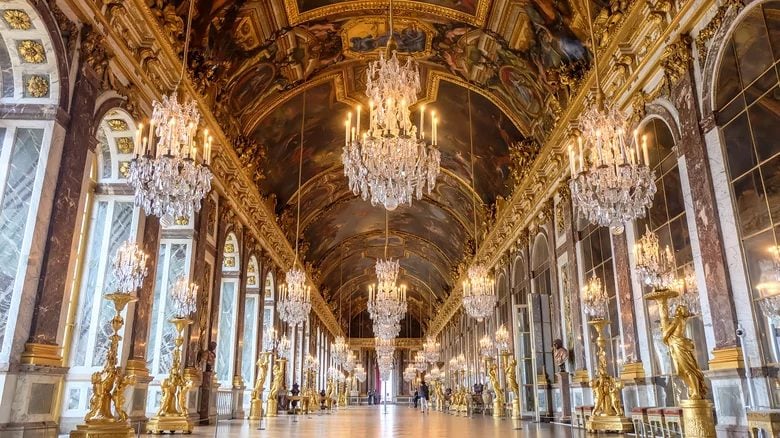
The scope, caliber, and cost of the internal design and décor of Versailles were unparalleled. The best home furnishings and decorations could be found there, along with exquisite ceramic artwork, including Sevres porcelain, tapestries, and miniature bronze sculptures. Even elaborate displays of silver tableware and other furnishings were present in the inaugural salons named after the Roman pantheon, and the Hall of Mirrors. Nevertheless, these items were subsequently broken down to fund more military operations. Unsurprisingly, Louis XIV’s extravagant spending encouraged an enormous growth of French crafts and specialized applied art, immediately contributed to the development of Rococo art, and gave French painting and sculpture a boost that helped Paris establish itself as the world’s cultural center.
